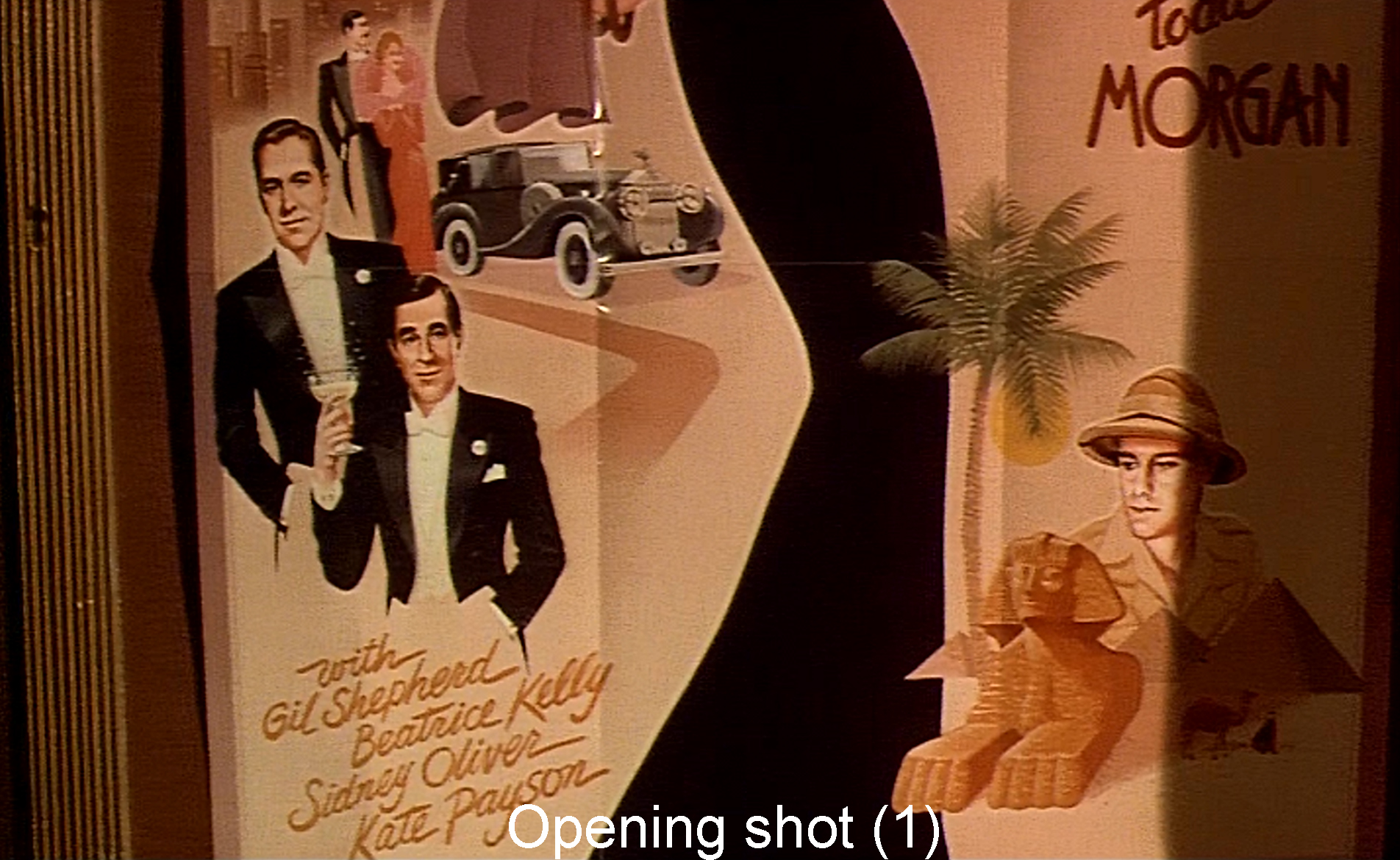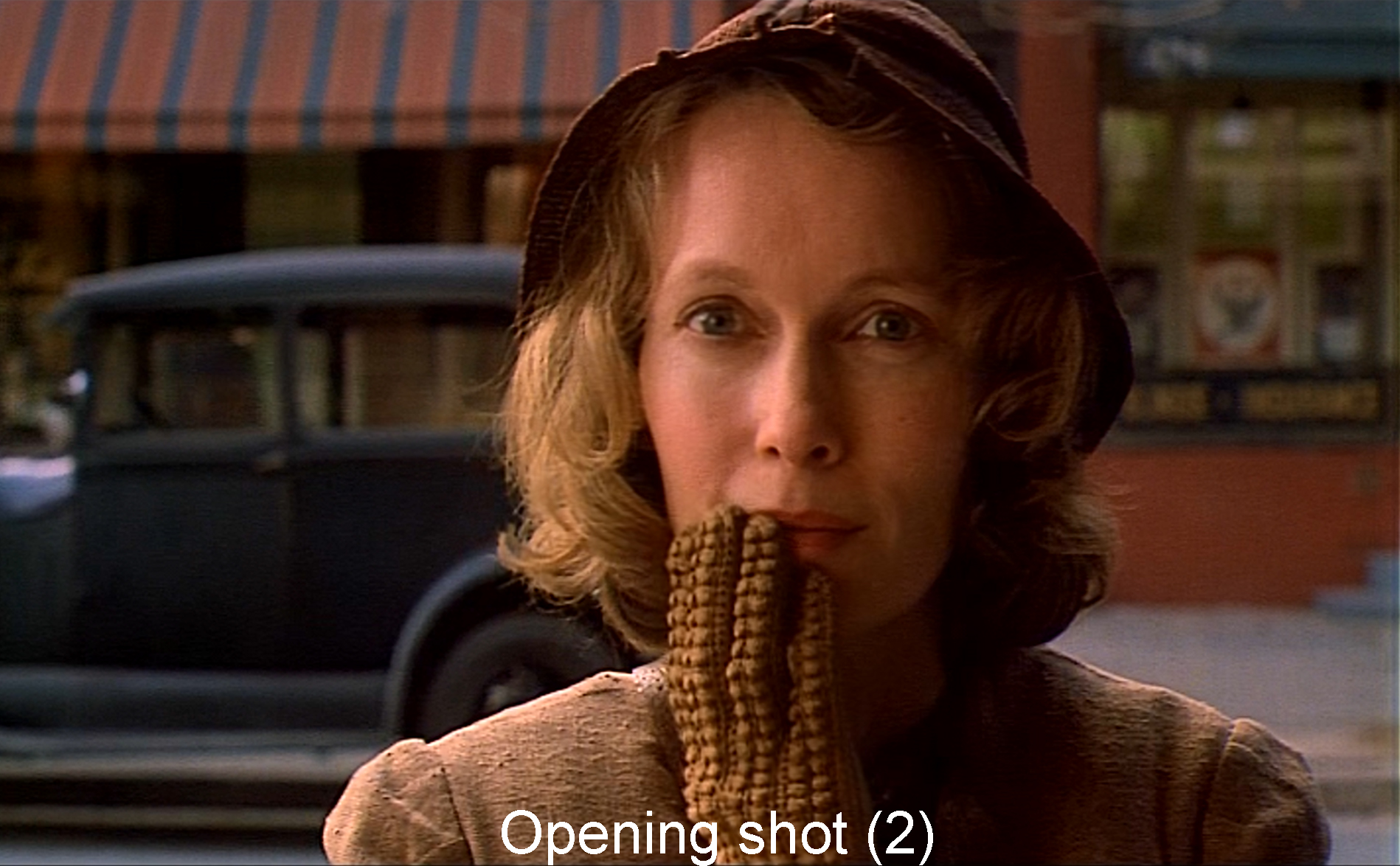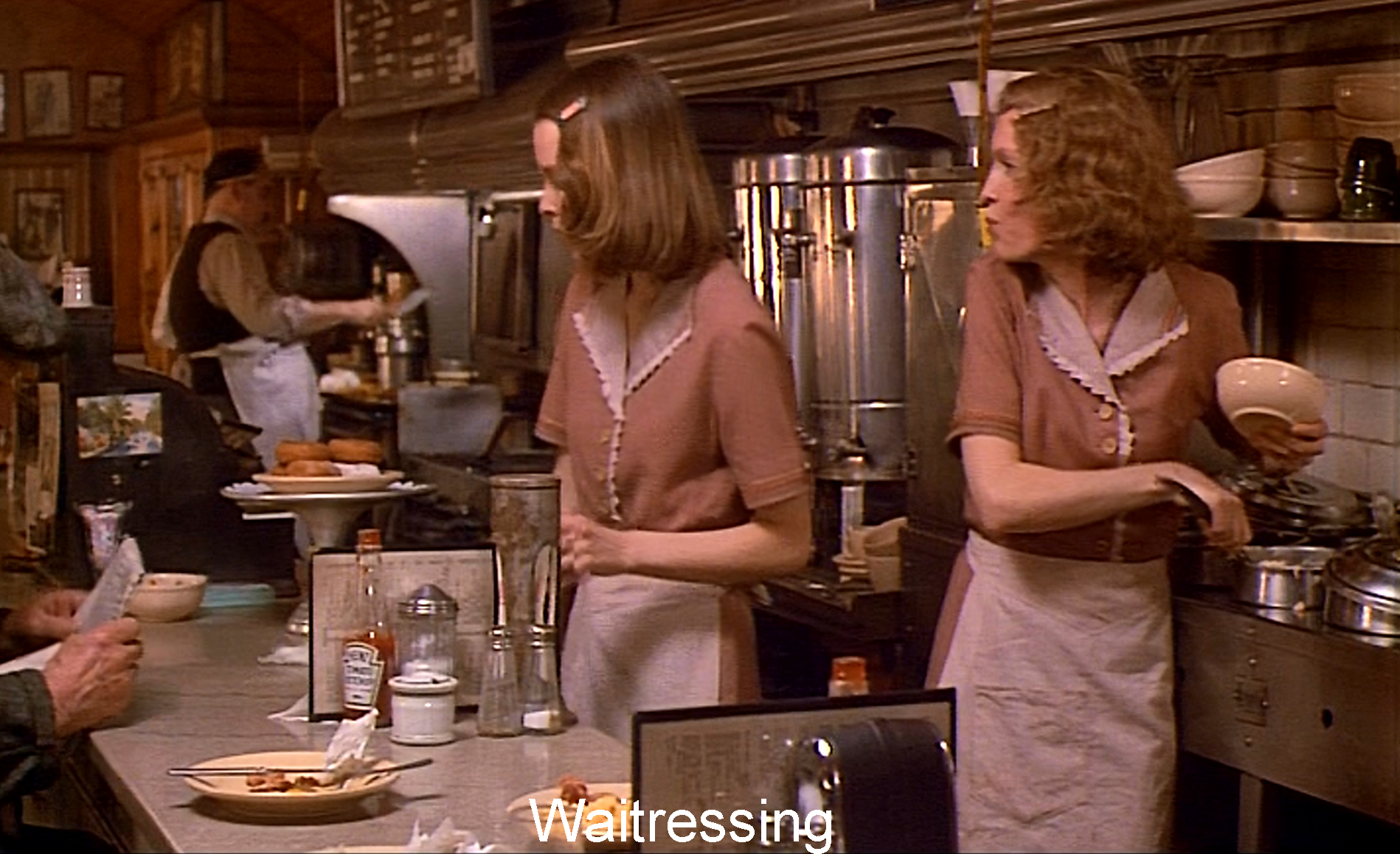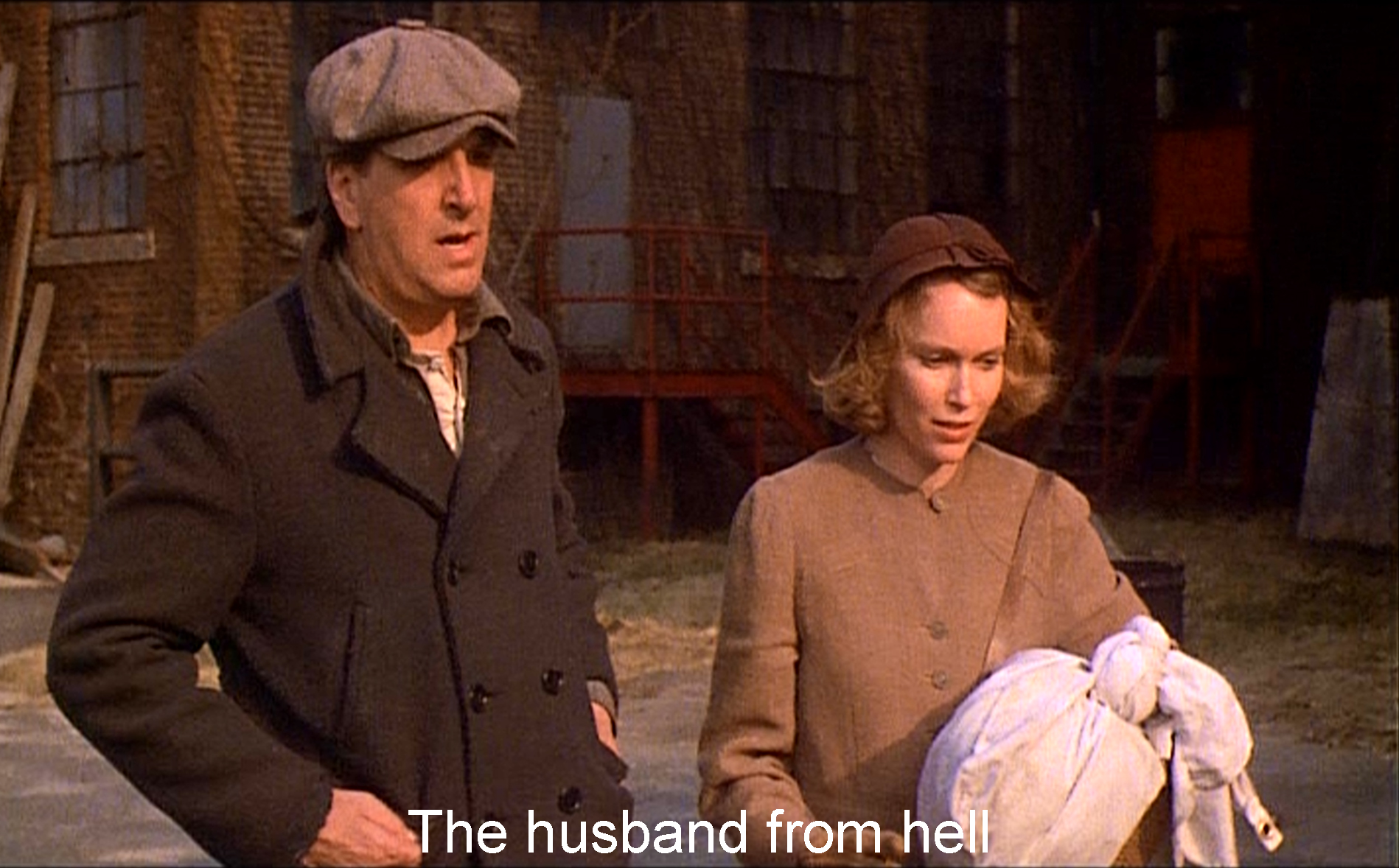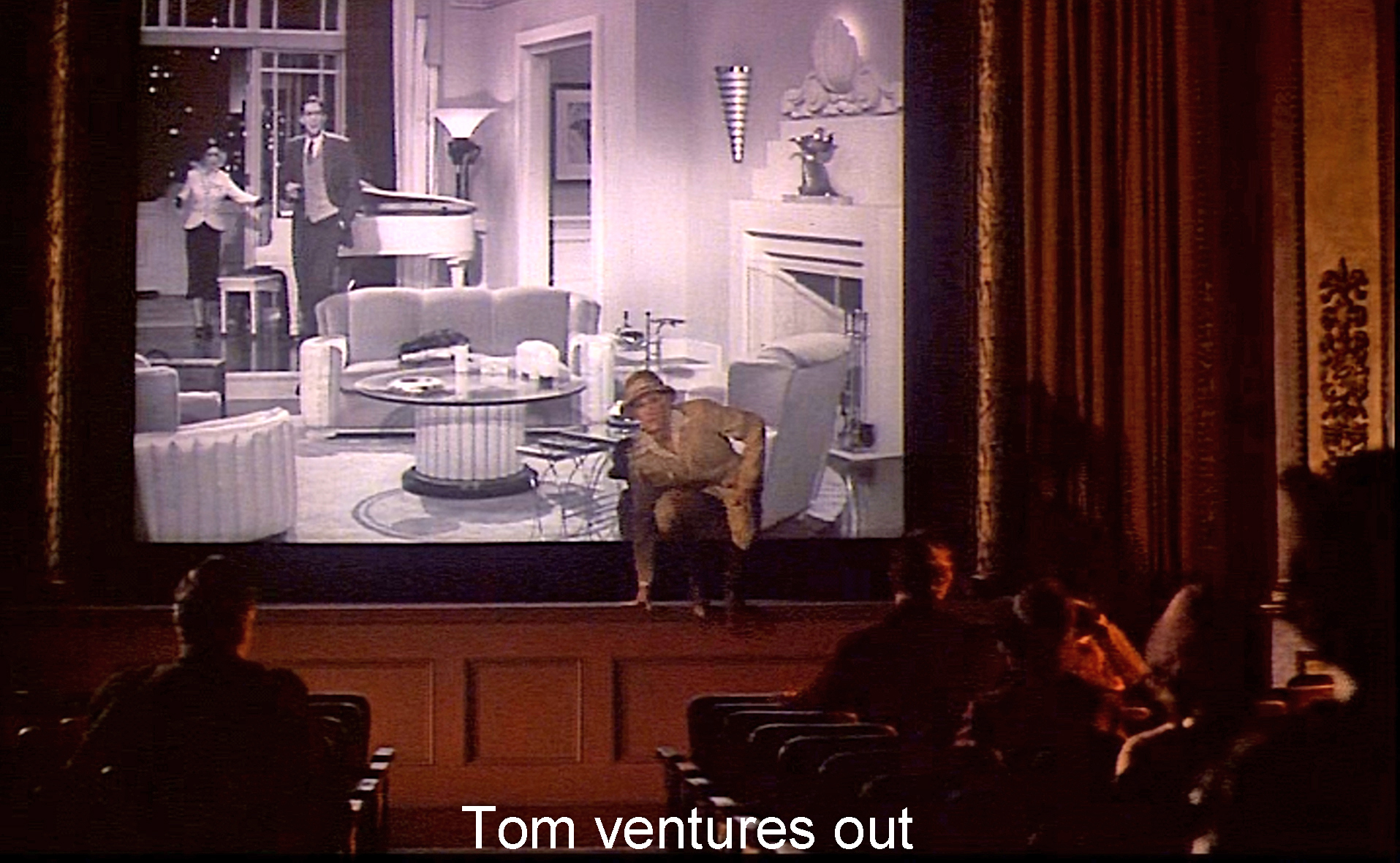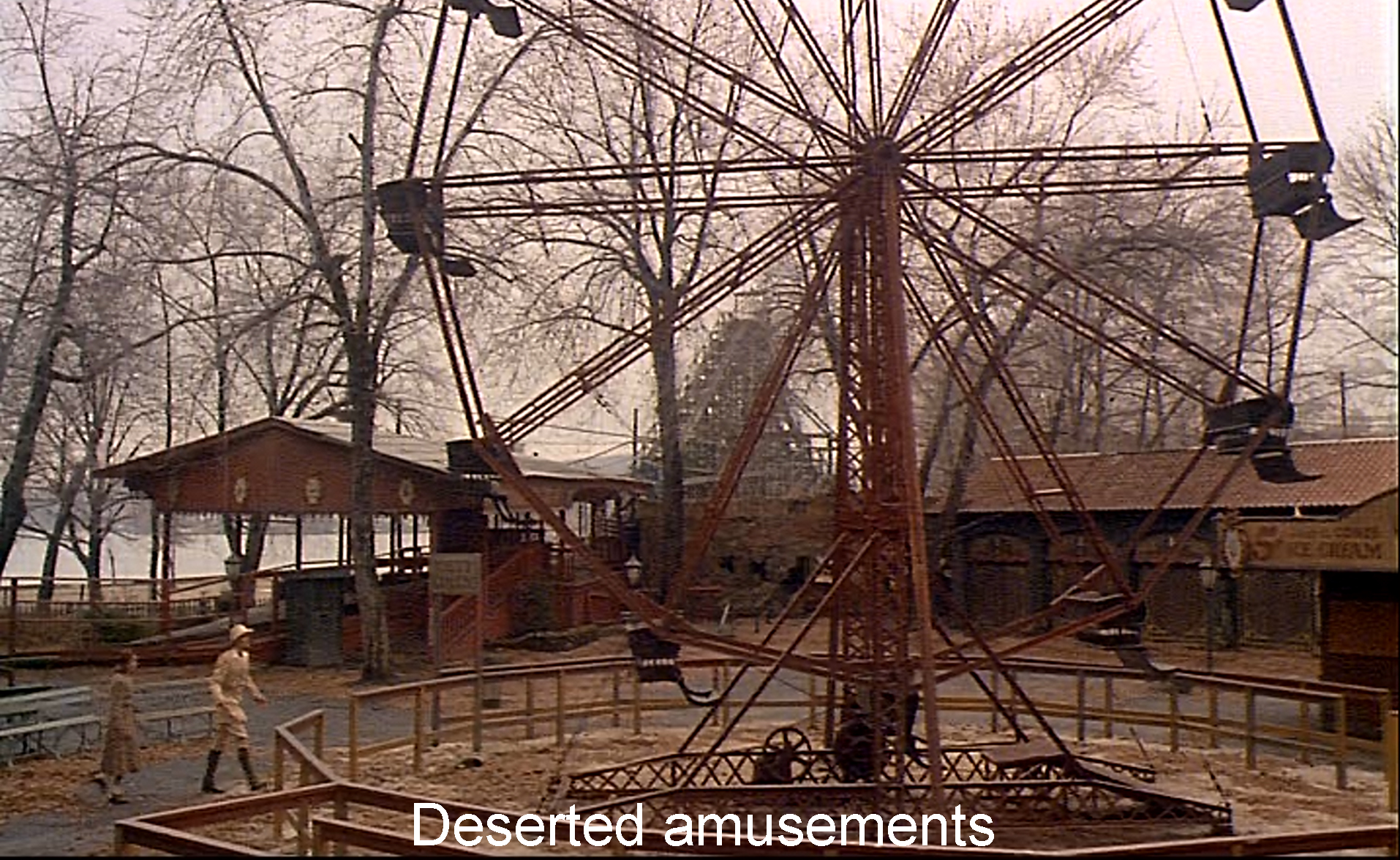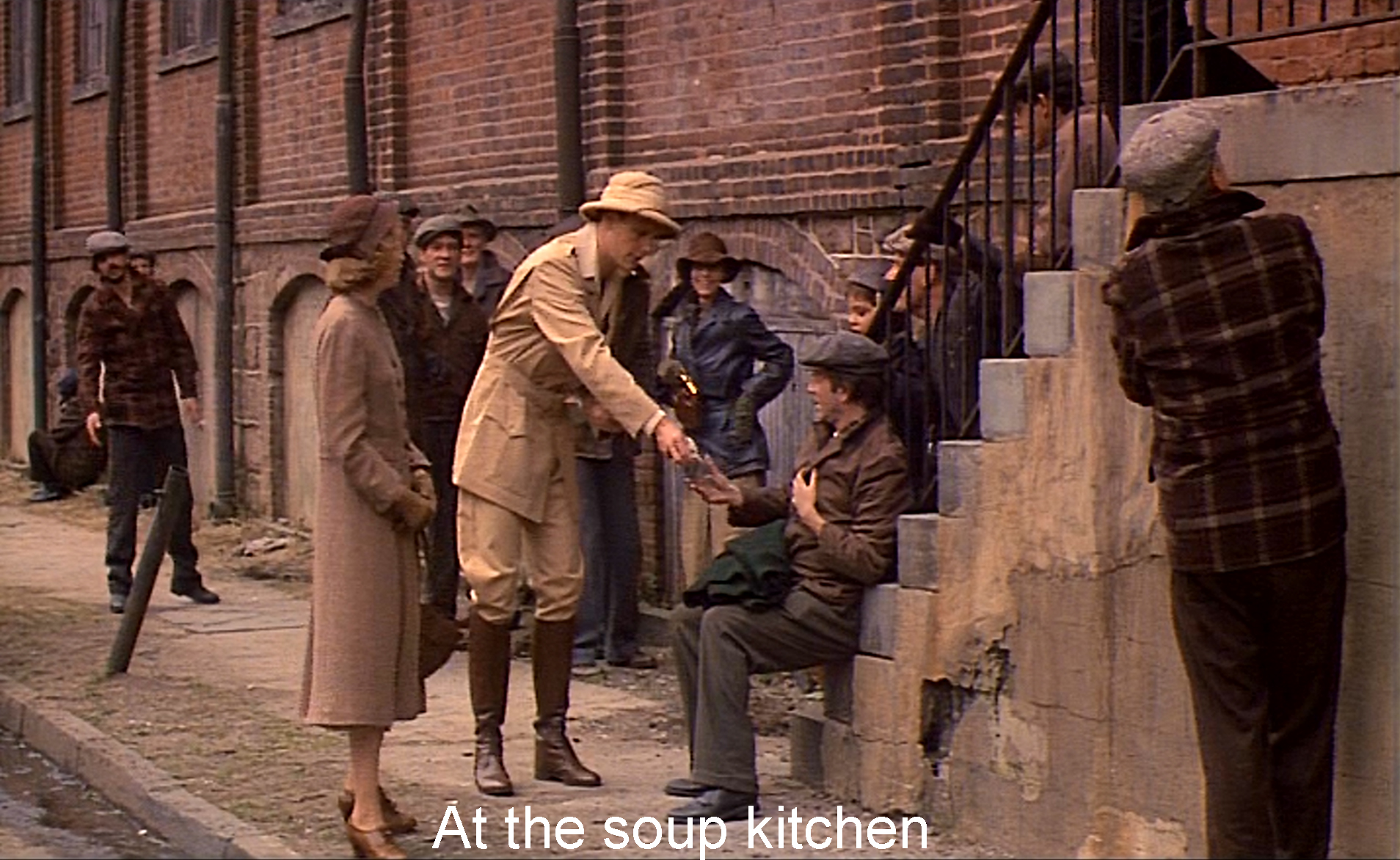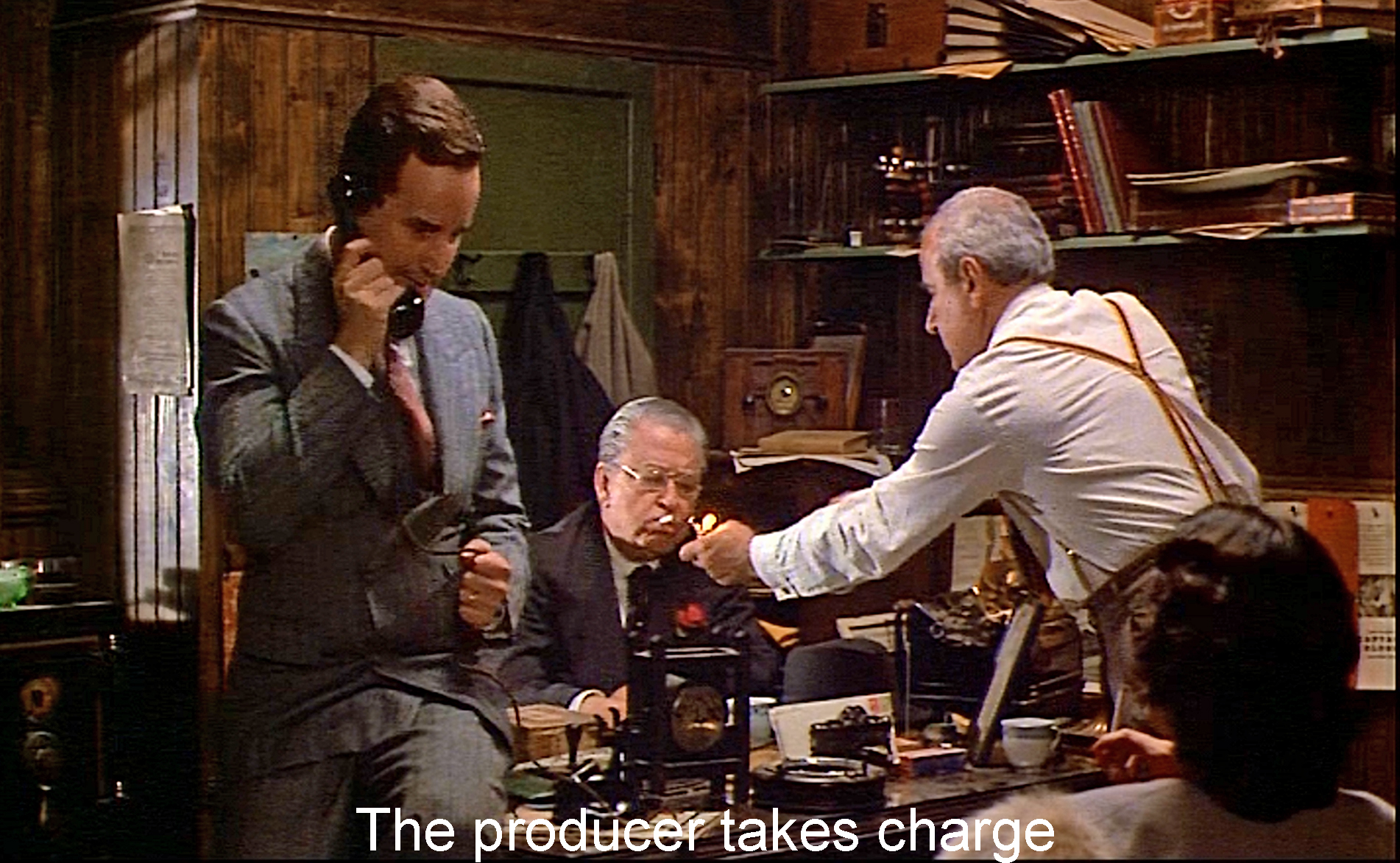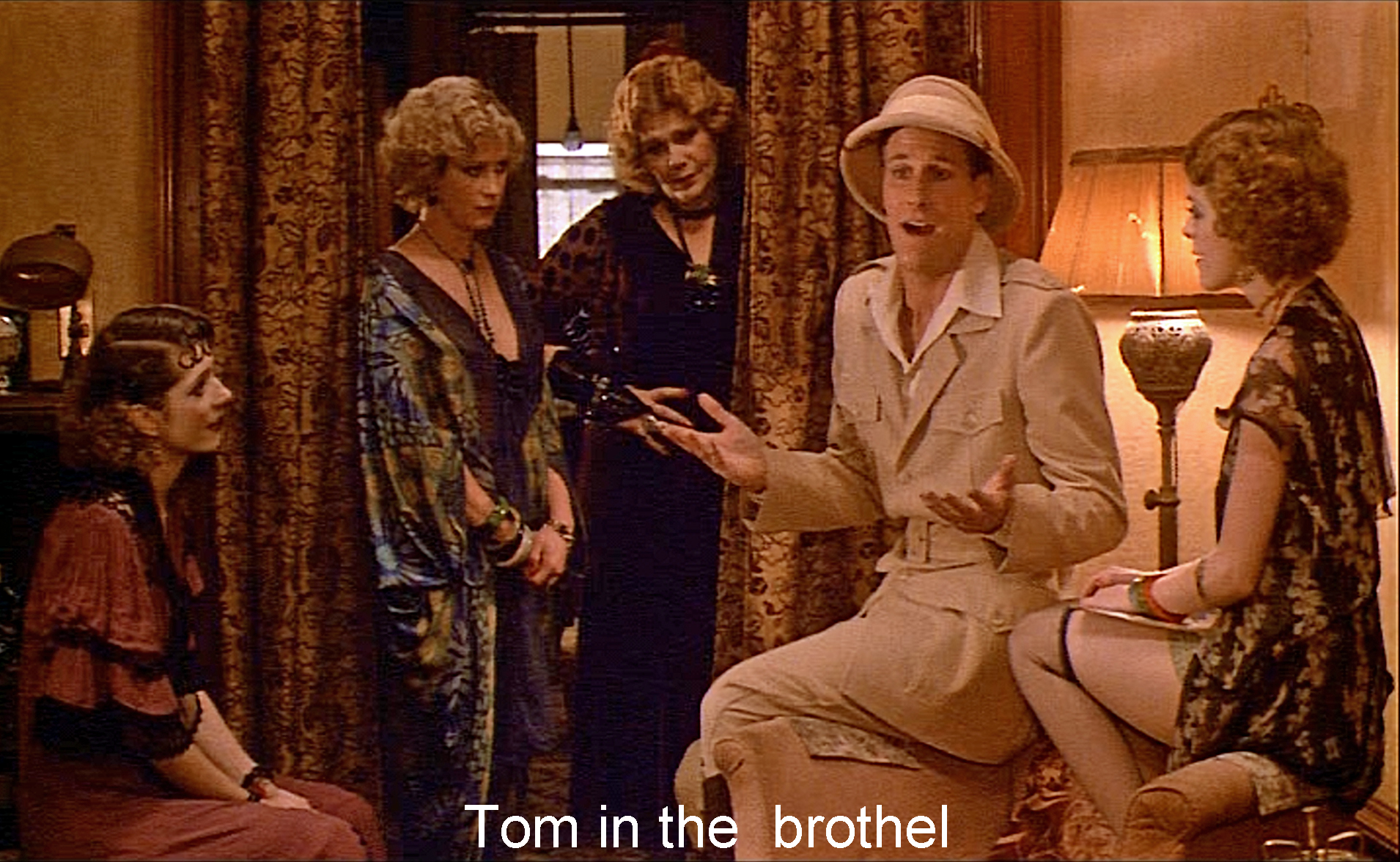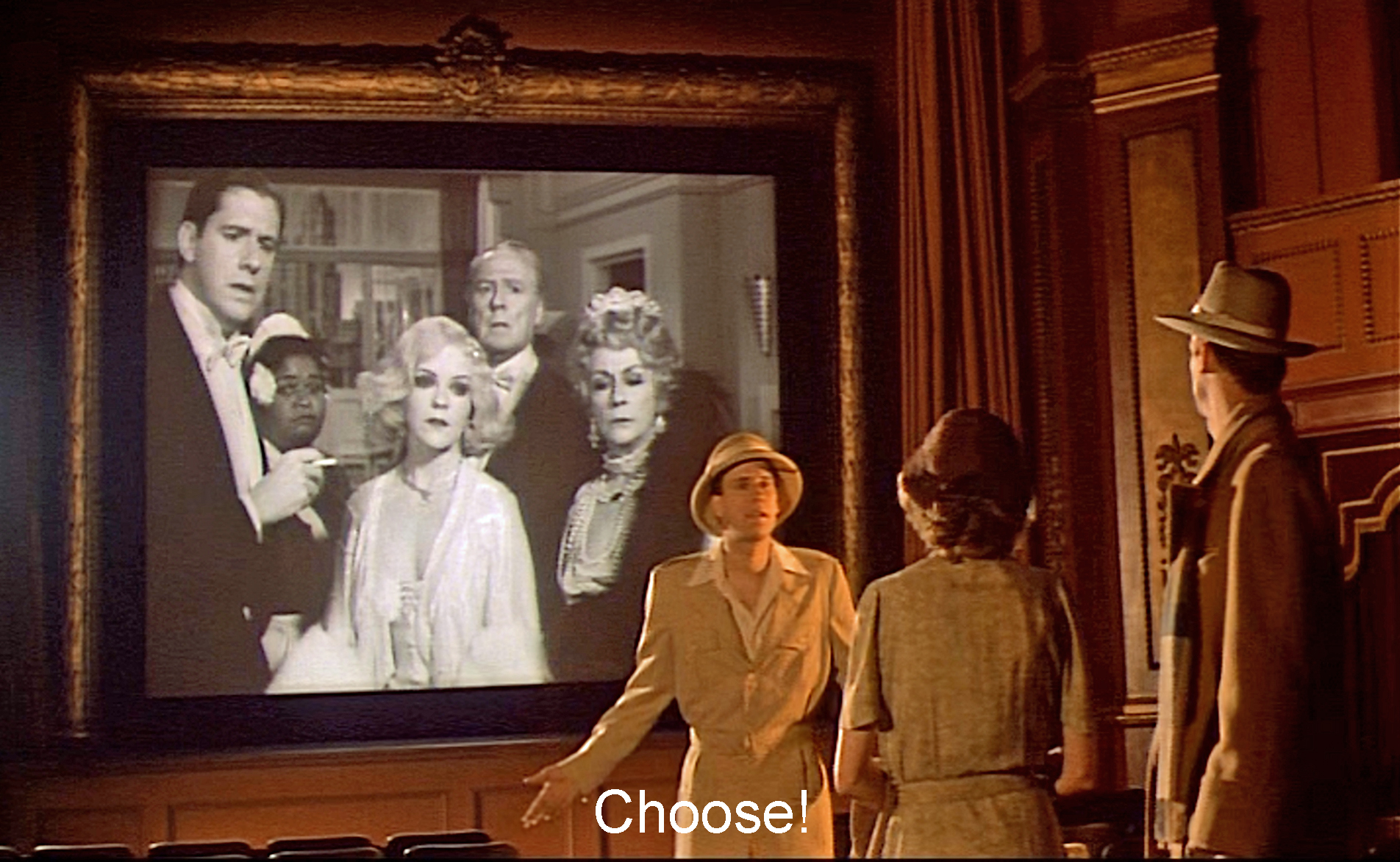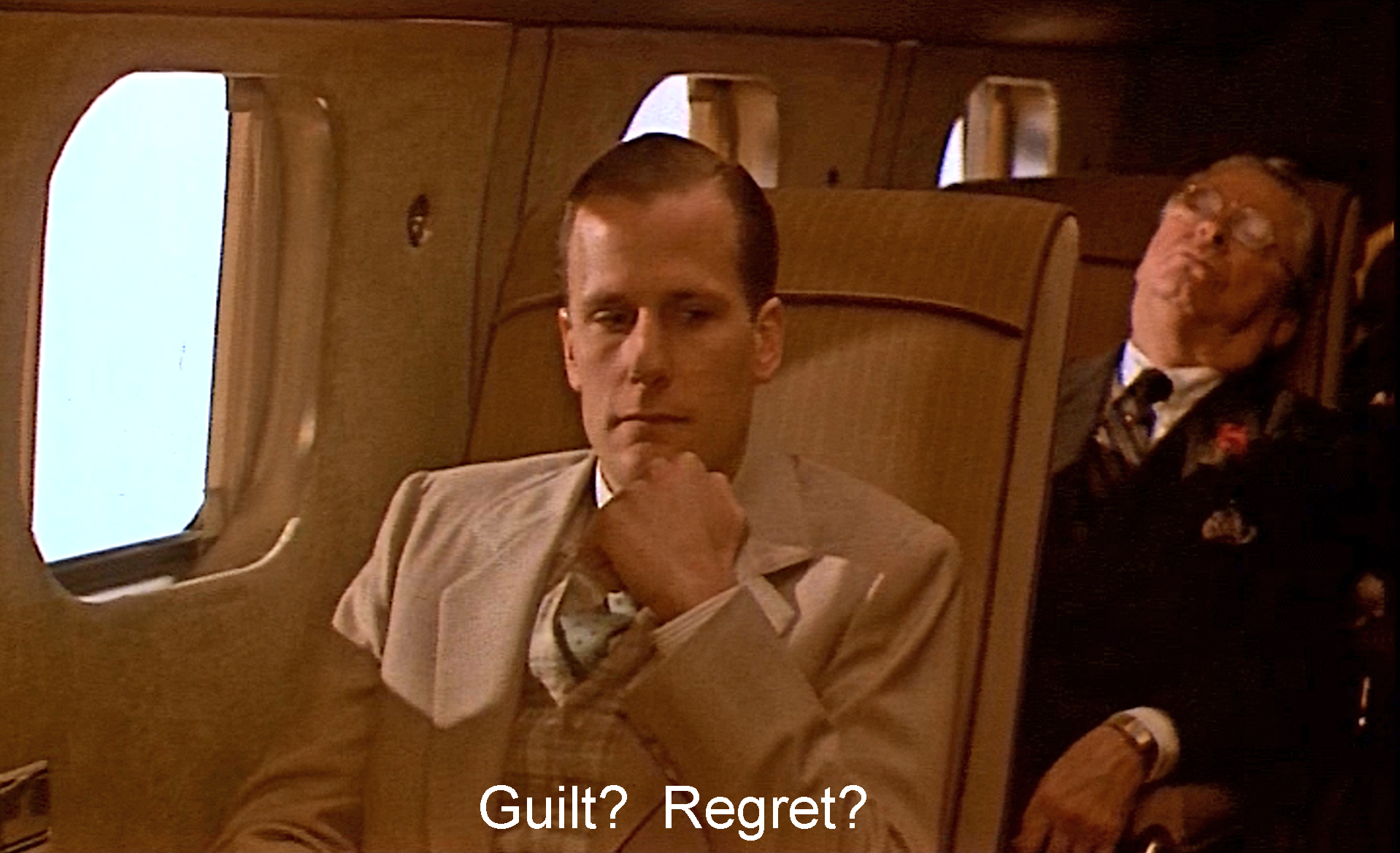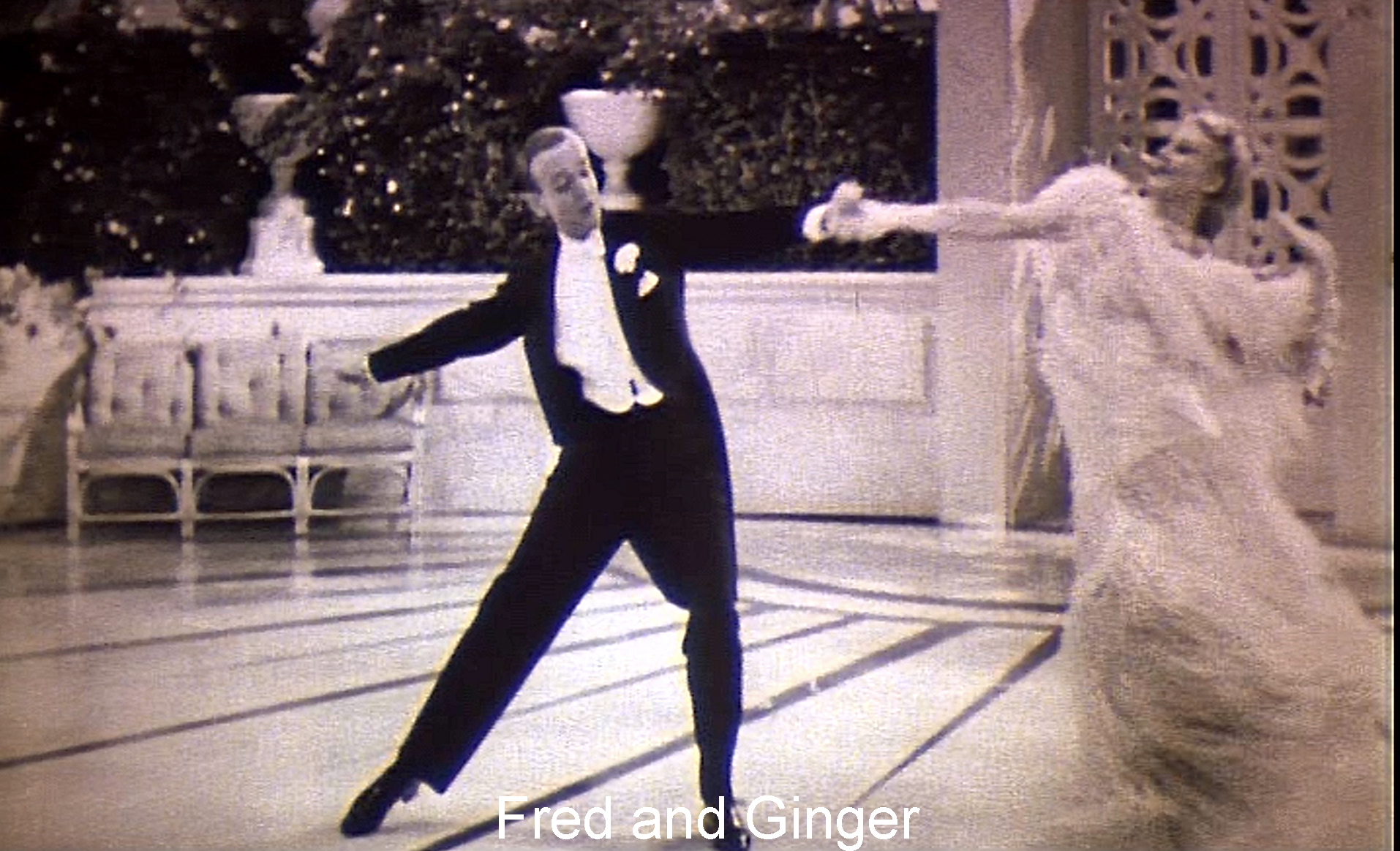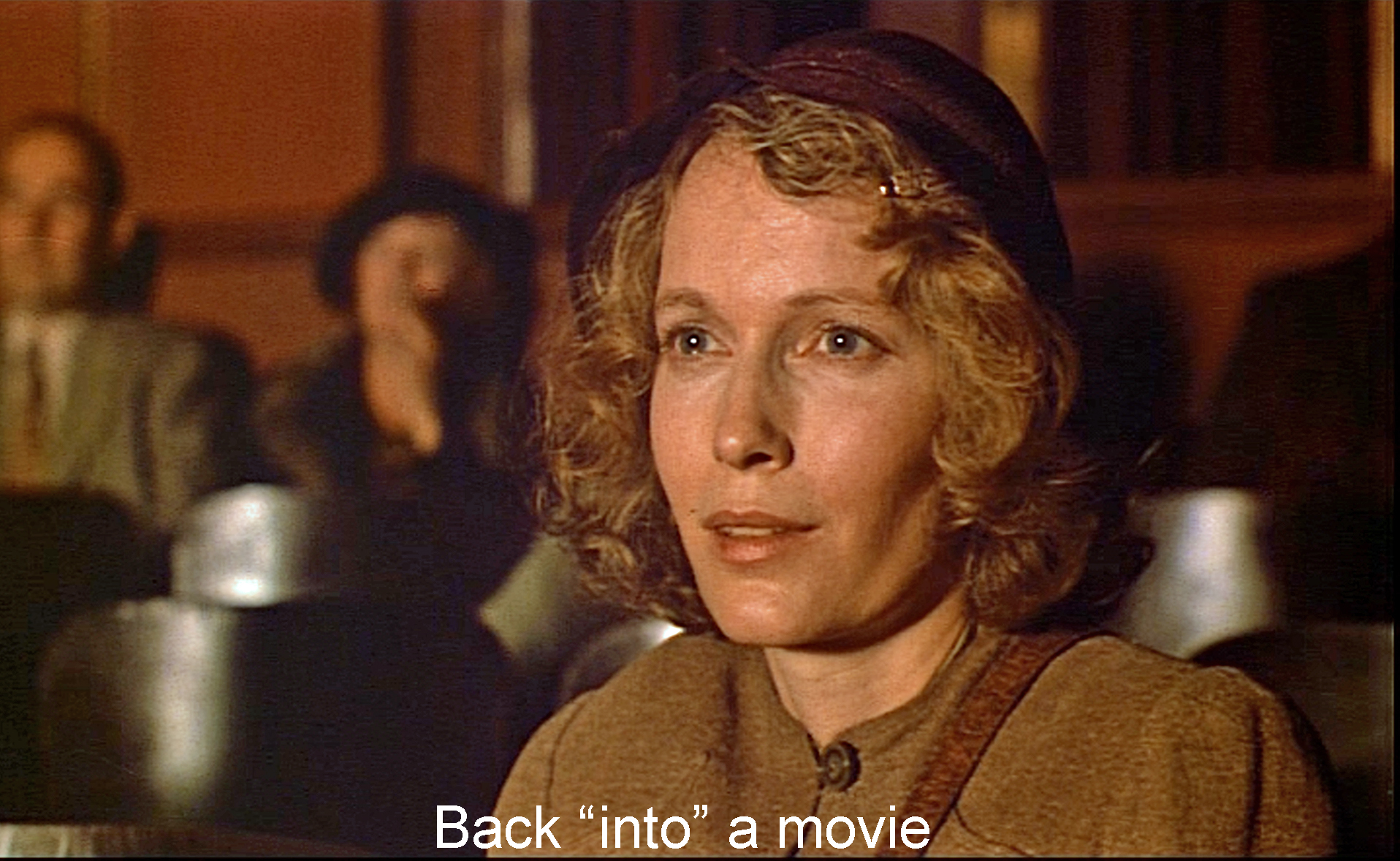It’s about free will, isn’t it? Characters in a movie do what they are scripted to do. They don’t do what they please, but this time one character does. Here, a character in a movie, “Tom Baxter of the Chicago Baxters. Explorer, poet, adventurer,” adventures indeed. Baxter (Jeff Daniels) steps out of the preposterously glamorous movie he is in and enters the movie theater and the world of 1935 New Jersey, drab and dingy in the Great Depression.
Purple Rose of Cairo is a metafilm, that is, a film in which film itself becomes the subject of the movie. Perhaps all meta-works raise the question of free will: Don Quixote, Tristram Shandy, or works by such modern and postmodern writers as Pirandello, Nabokov, Calvino, Rushdie, Barthelme, or Barth. Do the characters in these books simply do what their writers set down for them or do they have some other kind of existence? Do they have, unlikely as that sounds, free will? This movie gives Tom Baxter, the errant character in the movie-within-the-movie, lines like:
I want to be free to make my own choices.
I want my freedom.
I’ll just . . . enjoy my freedom,
I’m free. After two thousand performances of the same monotonous routine, I’m free.
And one of the now unmoored characters in the movie Tom has left, comments, “The most human of attributes is your ability to choose.” I believe we need to read this seemingly simple jokester, Woody Allen, as though he were Bergman or Fellini or Antonioni, since he claims these directors as influences. And I don’t hesitate to put Purple Rose of Cairo alongside Tristram Shandy as a comic masterpiece.
Woody Allen makes movies in which characters live between two worlds and feel comfortable in neither. Tom Baxter doesn’t like living inside the Purple Rose movie, but he can’t live outside it either. Here, as one of the Hollywood execs says, “The real ones want their lives fictional, and the fictional ones want their lives real.” This two-world dilemma makes one of Allen’s recurring themes.
Then, too, In Woody Allen’s movies, one character (often a Woody Allen stand-in) educates a naive person, Annie Hall, Tracy in Manhattan, Gil Pender (Midnight in Paris), and sometimes the not so naive, Boris Yellnikoff (Up), Alvy Singer (Annie Hall), or Cristina (Vicky, Cristina, Barcelona). It’s his Pygmalion theme. Here, the heroine, Cecilia (Mia Farrow) and the women in the brothel educate Tom who knows only what the movies allow him—no real sex, no real money, and when Cecilia’s husband punches him in the gut he gets up unhurt, his hair not even mussed. “It’s one of the advantages of being imaginary.”
One Woody Allen theme trumps them all: he jokes. He jokes and jokes and jokes, as if jokes can somehow lighten the suffering which he sees as our lot in whatever world we try to live in. Perhaps that is why all the Hollywood people in this movie aspire to musical comedy, surely the most frivolous of genres. (Didn’t Walter Pater say, “All art aspires towards the condition of music”?) At the end, the maître d’ at the Copacabana announces that he always wanted to tap dance, and he gets his wish, tapping across the floor in front of the bandstand. He foreshadows the final scene with the famous “Cheek to Cheek” dance by Fred Astaire and Ginger Rogers from Top Hat (which dates this movie at 1935).
I see these three things, dual worlds, education, and jokes, as making up what, in The I, in my psychological mode, I’d call Woody Allen’s “identity theme.”
More often than not, the joke glides into surrealism. Think of the cartoon and split-screen sequences in Annie Hall, time travel in Midnight In Paris, Zelig’s omnipresence, the magic and the return from death in Scoop, and, of course, the actor stepping out of the movie in Purple Rose of Cairo.
In Purple Rose of Cairo, the heroine, Cecilia (Mia Farrow), lives between two worlds. In one, she is a waitress in a diner where the boss and the customers constantly bawl her out. Monk, her brute of a husband (Danny Aiello), unemployed for two years, grabs her pathetic wage, gambles it away, spends his days pitching pennies, womanizing, and beats her from time to time (but not without a warning first!). Cecilia is beaten down, and Mia Farrow’s pinched face is perfect for her submissive role.
In her other world, she loses herself in the movies where she will watch a preposterous film like The Purple Rose of Cairo again and again. Her face registers total absorption and rapture. Incidentally, the local movie house is the Jewel (English for French bijou). But this jewel will turn out to be glass. Finally, the world of Hollywood-manufactured fantasy and romance will fail her.
The opening sequence states the theme. The first thing we see is a poster for the glamorous world of a movie, then Cecilia’s enraptured face, and then she is almost conked on the head by a letter falling from the title being loaded onto the theater marquee. The world of romantic fantasy will let you down, reality will hurt you, and that’s the rest of the movie.
When you really get “into” a movie, when you give yourself to it totally, as Cecilia does, you give up free will. In a neurological sense (as I showed in Literature and the Brain [2009]) people in the audience turn off the action systems in their brains and with them their reality-testing. When she loses herself in a movie, Cecilia gives up precisely what Tom Baxter seeks to gain by stepping out of the movie: choice and the real world. “The real ones want their lives fictional, and the fictional ones want their lives real.”
The key word for this movie is escape. Cecilia escapes from her miserable life. Tom escapes from his luxurious but scripted life.
And, of course, we do what Cecilia does. The opening shot of a movie poster for Purple Rose of Cairo not only introduces Cecilia to the movie-within-a-movie; it introduces us to the main movie that has the same title. We will escape. We will let it govern our minds, just as Cecilia turns her mind over to the movie-within-the-movie.
The fantasy-world of movies is itself divided into two worlds. Purple Rose offers a world of impossible romance and glamour. The Italians called such movies telefoni bianchi, “white telephone” films featuring impossible luxury and leisure (and later, Cecilia will ooh and ah, “ I’ve dreamed of a white telephone”). Incidentally, “Purple Rose” makes a near-pun on “purple prose.”
But there is also “Hollywood,” the real world of hard-nosed moneymakers. It consists of angry producers, actors trying to make a career, gossip columnists, agents, lawyers and lawsuits, and failed marriages. Cecilia reads movie magazines to keep up with this side of her fantasy world, and her gossipy dialogue recalls long-dead actors from the ’30s, like Jane Froman, Lew Ayres, or Ruth Chatterton.
Living in these two worlds, uncomfortable in both the movie at the Jewel and “Hollywood,” is one character split into two. There is the onscreen character Tom Baxter, “explorer, poet, adventurer,” who explores and ventures into the real world. And there is the actor who creates him, Gil Shepherd (also played by Jeff Bridges). He is frantically trying to build his career and hopes to play Charles Lindbergh in his next film, another one who flies away as Gil does at the end.
Notice that the negative, realistic sides of both these dual worlds are economic. Cecilia is living, somehow, through the Great Depression. Gil is at the mercy of the gossip columnist we first see him talking to, his agent, the Hollywood suits, and his all-powerful producer. The ideal sides of the two worlds are art, where (for Woody Allen) dwells perfection. Notice that Cecilia’s romantic world is in black-and-white (Woody Allen’s preferred medium in Manhattan, for example), while the realistic, less attractive worlds are in color. Hollywood is brightly colorful, but Cecilia’s depressed town exists in a limited palette, heavy on the browns.
Woody Allen has his fun when he gets his fictional explorer out into very non-fictional Depression-era New Jersey. In this, his movie resembles a famous Woody Allen short story, “The Kugelmass Episode” (The New Yorker, May 2, 1977). But Purple Rose has more bite to it. Woody Allen is following a long tradition of social satires that use a naive observer to bring out the faults in a society. (Think of Gulliver’s Travels, Candide, Dead Souls, or Huckleberry Finn.) But here Tom’s exploring New Jersey satirizes, not New Jersey, not society, but the movies.
Tom hangs out at a deserted amusement park. Is it a symbol of how “amusement” ultimately fails people? He passes a line at a soup kitchen and “helps” by giving one man stage money. He finds he can’t pay a restaurant with his movie money. And cars don’t start up the way they do in Hollywood, without a key.
The brothel scene, surprisingly or perhaps not so surprisingly, is where Woody Allen has Tom really confront the difference between life and the movies. Sex in the brothel (an institution Tom can’t understand, it being a no-no under the Code) gets him to thinking.
I was thinking about deep things. About God and his relation with Irving Sachs and R. H. Levine [scriptwriters for the movie he is in]. I was thinking about life in general. The origin of everything we see about us. The finality of death and how almost magical it seems in the real world as opposed to the world of celluloid and flickering shadows. For example, the miracle of birth, the absolutely astonishing miracle of childbirth, with all its attendant feelings of humanity and pathos—I stand in awe of existence.
All this, of course, the movies of 1935 censored out. And to all this the “ladies” in the whorehouse respond with Woody Allen deflation, “Do you wanna tie me up?” “Two of us at the same time?” Taking sex out of the movies takes out a lot of reality. “Do you share my sense of wonderment at the very fabric of being? The smell of a rose. Real food. Sensuous music.” None of them exist in movie-land where the champagne is really ginger ale. Even pregnancy doesn’t exist under the Production Code in 1935.
The kind of movie Tom has been in doesn’t feature churches, and he’s puzzled when Cecilia pulls him into one. God, she explains, is “The reason for everything, the world, the universe.” Tom immediately understands in movie terms, “I think I know what you mean. The men who wrote The Purple Rose of Cairo. Irving Sachs and R. H. Levine, who collaborate on films.” God writes scripts.
Death is different, too. When Tom steps out of the movie, the theater owner (Irving Metzman) wants to turn the projector off. The onscreen characters in the movie yell, “No! Don’t turn the projector off. No, no. It gets black and we disappear.” “You don’t understand what it’s like to disappear. To be nothing. To be annihilated. Don’t turn the projector off.” This is death in movie-land, and the movie-within-the-movie plays out against this threat of death (always one of Woody Allen’s themes). Indeed at the end, the producer ruthlessly pulls the movie from all the theaters and destroys all the prints, and that’s the miserable end of Tom Baxter and his glamorous friends. Notice that Tom had made his entrance coming out of a tomb.
The final confrontation between Tom and Gil comes, where else?, in the movie theater. Whom will Cecilia choose? “Perfection” from the screen—Tom? Or real-live Gil, the movie actor “with a magical glow” who has so assiduously wooed her? She chooses Gil, and Tom returns to the screen and (we know) obliteration.
Alack and alas, Gil is an actor, bent on preventing any block to his career, such as an affair with a New Jersey wife and waitress. For all Cecilia’s longing for romance, Gil is faking from the get-go when he courts Cecilia. He’s just trying to get Tom to go back onscreen and save Gil’s career. Even so, he feels pangs of guilt on the plane back to Hollywood. And perhaps his guilt stands for the guilt all movie makers might well feel for luring wretched people like Cecilia into an unreal world of romance.
The movie ends when Cecilia, abandoned by Gil and now in a totally hopeless situation with neither job nor husband nor lover, goes back to the movie theater. Onscreen, Fred Astaire and Ginger Rogers are doing their legendary “Cheek to Cheek” dance from Top Hat, all white tie and tails and fluffy, floating evening gown. It’s the same total “white telephone” romantic song that we heard when the film opened, and Cecilia duly lapses into the enraptured contentment we have seen before. It’s a bitter, bitter comment on movies as escape from reality and on us as willingly hypnotized viewers.
But in the process of satirizing movies, Purple Rose has gotten us to think about (in T. S. Eliot’s famous phrase) “birth and copulation and death.” To think about poverty, fantasy, escape—really, what are we, the movie audience, all about? It’s gotten us to think about free will and how we give it up to lose ourselves in a movie where a script determines what we will see and feel. As always with films from Woody Allen’s middle period, Purple Rose of Cairo shows a surprising richness of conception amidst a lot of just plain fun. No wonder they teach Woody Allen movies in university philosophy departments.
